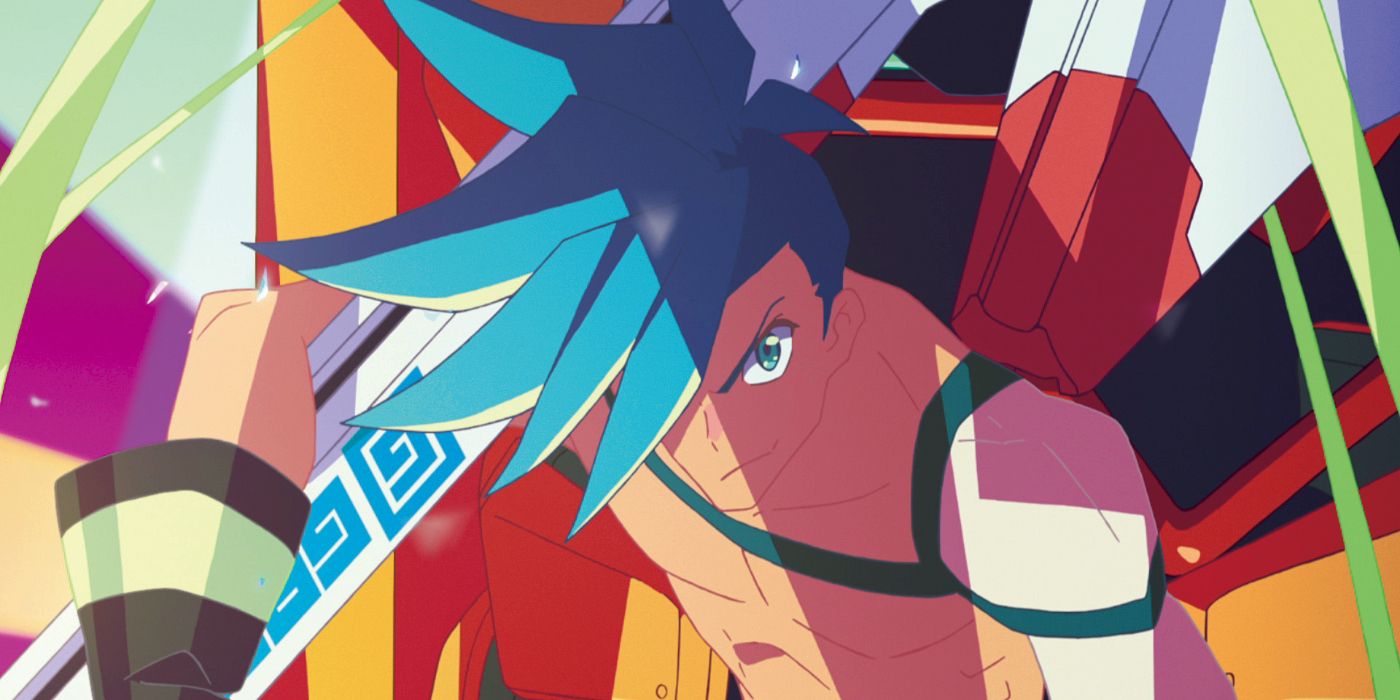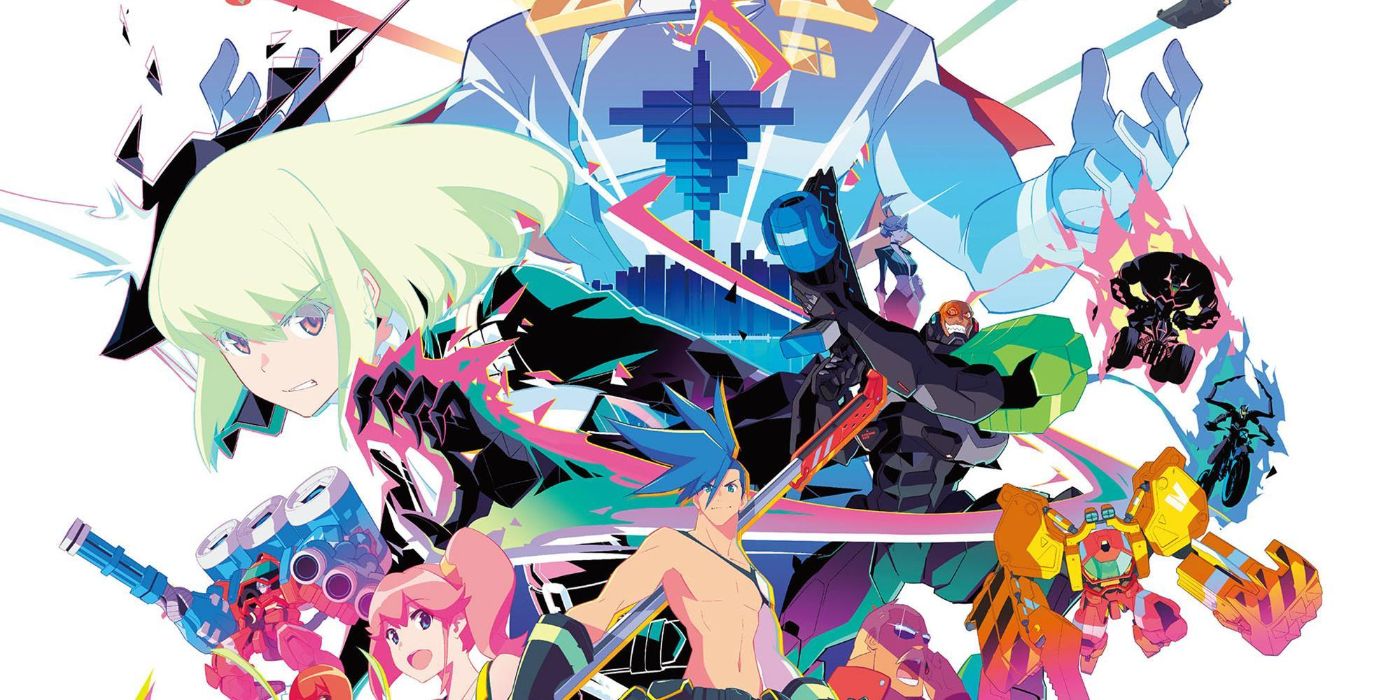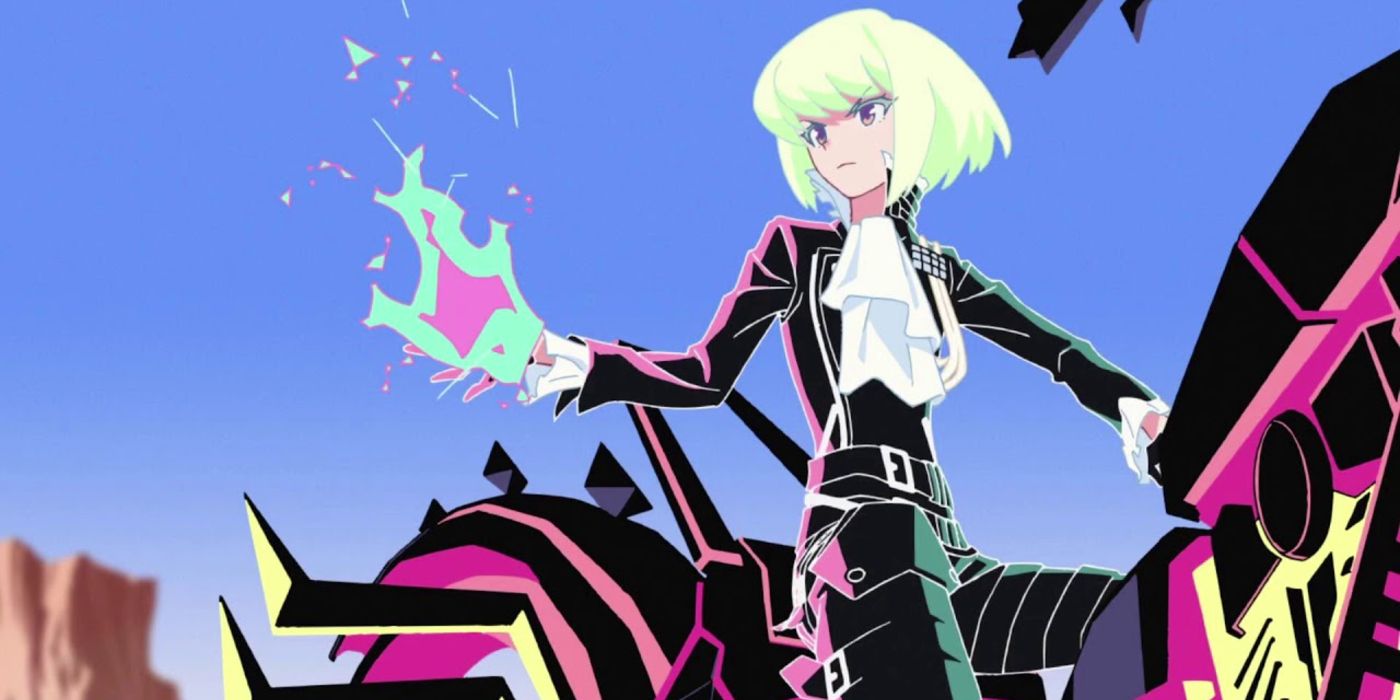Studio Trigger's Promare is bound to make some jaws drop once its hits theaters. The feature-length anime film is set in an entirely new universe that features living fire as a key element of the narrative, allowing for some spectacular visuals that rival the studio's previous work, which has included Gurren Laggan, Kill la Kill, and Panty & Stocking with Garterbelt. That, coupled with a new protagonist that is set to rival Kamina in terms of his boisterous personality and penchant for finding trouble, will surely mean Promare hits home for long-time fans of Studio Trigger's work.
Promare follows the story Galo Thymos, a member of Burning Rescue, a group of fire fighters who also serve as actual combatants when it comes to the Mad Burnish, a terrorist organization of humans who can use fire in an almost pyrokinetic manner. Galo is opposed by Lio Fotia, the charismatic leader of the Mad Burnish who wants to eke out a better living for his compatriots, who are discriminated against heavily by regular humans in society. The film touches on concepts like environmental preservation and equality, but remains a Studio Trigger work in the sense that it complements these qualities with some eye-popping visuals that push modern day animation to its limits.
Experimentation is definitely at the heart of Promare, but Studio Trigger isn't just trying to test new animation techniques out - it's also looking to expand its reach to a whole new generation of fans, and it hopes Promare will serve as the bridge to the rest of the company's works. Screen Rant got a chance to interview Studio Trigger director Hiroyuki Imaishi, designer Shigeto Koyama, creative director Hiromi Wakabayashi, and designer Super Log ahead of the film's limited release, where the group chatted about any environmental influences, the importance of mech design, and why so many of their works include references back to previous titles.
How much of Promare came about because of current concerns over the environment? The fire of the world is such a prominent factor in the film.
Group: We might have these kind of topics or subjects apparent in the film, not just the pollution for the world, but our main concern is entertaining at first. We may cover these topics, but we don’t want it to be the main focal point of the film. The film needs to be a form of escapism, so it has to be entertaining to start with.
Speaking of entertaining, then, the fire visuals just absolutely pop off the screen - can the team speak to the kind of challenges that come with creating a movie that relies so heavily on these complicated fire animations?
Shigeto Koyama: The fire for Promare is designed in a way where it can be executed in both CG and traditional animation. In regards to the overall design - the color, the shapes, how the fire moves - I believe that might be the single aspect of the film that we experimented most with.
The mech designs are very different than what we’ve come to expect from Studio TRIGGER in general. How did the team arrive at those designs and is there any specific reason those decisions were made?
Group: Are you referring to the mech design in the rescue suits at the beginning of the film, or the actual mech from later?
The early suits are definitely the ones that are the biggest departure, but I’d love to hear about the later mechs even if they’re closer to what fans expect.
Group: In order to make the Galo de Lion be more enticing as a visual, we went with a very industrial - not realistic, necessarily, but practical - design for the earlier mechs in order to make a very easy visual comparison between the later ones.
We just took this design from the earlier mechs to present the later mechs better.
Designing and working on a two-hour feature length film seemed to give the studio a lot more freedom. What kind of things were you able to do in a standalone film that you couldn’t do in an episodic anime series?
Group: This might only apply to Japan, however, for example: there’s a certain broadcast rule in Japan for television series, and this doesn’t really take into account the length of each episode or film, but the broadcast might not allow the studio to use such vibrant colors, or flickering lights. Very intense motion, basically. This rule was set in stone after the Pokemon incident - there was an episode that caused seizures and for that reason a lot of the broadcast stations won’t allow the use of a lot of contrasting, vibrant colors and very intense animation. But that doesn’t apply for Promare.
In terms of visual presentation, there’s a difference. Of course, there’s other more obvious reason - a television series, while each episode might be shorter overall, we have more “real time,” so we can have a little more screen time for the story.
Promare’s protagonist Galo - fans of Studio TRIGGER are going to notice a lot of similarities between him and Kamina. Why did Galo end up so similar to an already established protagonist like Kamina?
Hiroyuki Imaishi & Hiromi Wakabayashi: It isn’t just Kamina and Galo - all of the main protagonists that Imaishi presents follows a certain set of rules. They usually have spiked hair, a very aggressive eye and attitude, and all of these projects, a film, a television series, whatever it may be - it starts with Imaishis very rough drawing. That gets interpreted differently by the rest of the character designers. It’s only natural they have certain similarities amongst the characters. If you look back across all of my characters - Panty, Ryuko, Kamina, and Galo - they all share a certain level of similarity.
This film feels very much like a love letter to those who have supported TRIGGER and all of their previous work. How did the studio’s previous series influence the movie, and why did they choose to include so many Easter Eggs for fans to pick up on?
Koyama: You know, this kind of applies to all of my works - there’s always a certain level of homage or Easter Eggs from the previous series. So if you’re a long-time follower of our series, it kind of becomes more and more apparent the more you’ve seen our series. I do think it was more apparent especially for this film, however. It’s only natural that the fans kind of catch on, if they’ve seen two, three, or four of my works.
Wakabayashi: A lot of the core fans might think that Promare was made for the TRIGGER fanbase, but my intention was to actually appeal to a newer audience, too. So that’s why we put in so many Easter Eggs from our previous shows such as Kill la Kill or Gurren Laggan - especially Gurren Laggan, it’s a series we worked on over ten years ago. A lot of our fanbase may have grown out of their anime hobby in general, so we have a lot of newer, younger audience members. It’s kind of an introduction to that newer, younger fans that this is who we are.
Promare hits limited North American theaters on September 20.



